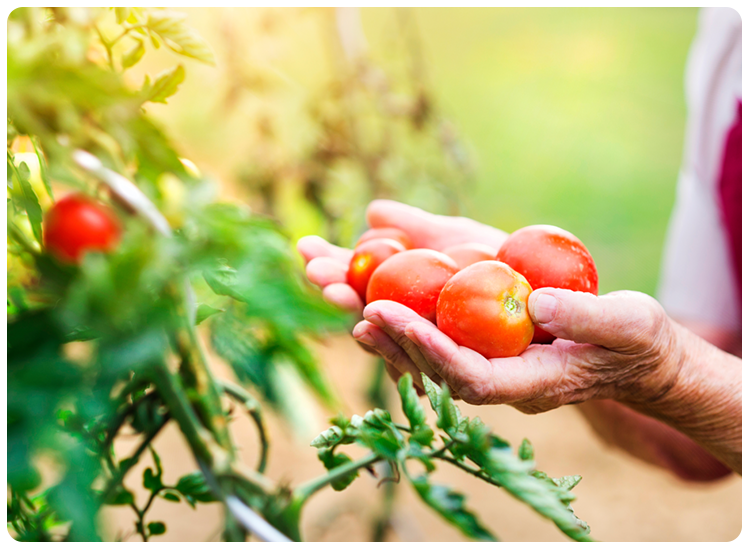
For many gardeners, the fruits of their labor are just that: fruits (or vegetables). But edible gardening is different from planting shrubs, trees, or flowers. If you’re growing something to eat, you should protect your family by using only safe, sustainable products to nourish the plants that will ultimately nourish you. Follow these steps to learn more about successful edible gardening.
1. Planning
First, what do you hope to grow? If you just want a simple herb garden, you may not need much space at all; most herbs can grow in a small container garden indoors, on a windowsill, or another brightly lit space. If you’re planning something a little larger, you could try an outdoor container garden. Or, if you’re thinking really grand, you may want to dedicate some of your lawn space.
Depending on which foods you’d like to grow, you’ll generally need a place with moist soil and ample sunlight. Although some plants are more tolerant of shadier conditions, there are a few standard rules:
- At least eight hours of sunlight for fruiting vegetables like tomatoes or peppers
- Six hours for root vegetables growing under the surface
- Four hours for leafy vegetables
On the other hand, fruits on the whole require full sun, with a few plants tolerating partial sun. Make sure to check your specific plants to help determine your plot placement.
2. Preparing
Once you’ve selected your location, it’s time to prep your garden. For a container or raised garden bed, you can simply fill it with a high-quality garden soil or mix in some soil amendments for added nutrients.
An in-ground garden will need soil amendments to balance the soil’s pH levels and strengthen its natural structure. You may choose to make your own soil additive by creating compost. Providing additional living microorganisms is like medicine for your garden soil – keeping it healthy and strong. A compost starter can help to speed up the composting process by introducing initial microorganisms. To maintain a healthy growing environment year-round, mix compost into your soil every spring and fall.
3. Planting
Once your soil has been properly prepped, it’s ready to support new plants. When planting, mix granular fertilizer into the planting holes or work it into the entire bed of soil. For an extra boost – especially when your plants are young and rapidly developing – apply a liquid fertilizer every one to two weeks.
Prior to planting, consider placing landscape fabrics first to reduce weeding while also allowing nutrients and water through to the soil. This will help protect the soil from natural erosion and enhance moisture-retention.
4. Fertilizing
As your plants grow and produce fruits and vegetables, they will consume a good deal of nutrients from the soil. Over the course of the growing season, you should replenish those lost nutrients with fertilizers. During periods of rapid growth, while the plants are young, liquid or water-soluble fertilizers work best because the nutrients penetrate the soil immediately for rapid uptake through the roots. These fertilizers should be applied every one to two weeks. As your plants mature, switch to either organic granular fertilizer or fertilizer spikes. Both provide time-released food for your plants and require less frequent applications.
Regardless of fertilizer type, be sure to follow package instructions for application dosage and frequency. Over-fertilizing can actually do more harm than good.
5. Harvesting
As your vegetables grow, it’s important to check them for disease or pests to make sure you’ll have a harvestable crop. While there’s no hard-and-fast rule for when to pick your fruits and vegetables, it should be at the peak of their flavor. When this happens varies on multiple factors including your soil type, the plant you’re harvesting, and your local climate. As you become more experienced with working in your garden, you’ll notice similarities from year to year regarding when this happens for you as well as other key indicators.
Overall, you’ll want to harvest your garden when you see vibrant colors and feel a supple firmness. There are specific characteristics to look for with each plant, so be sure to research by plant variety when harvesting your edible garden.
Throughout your edible gardening process, take advantage of our full catalog of products.